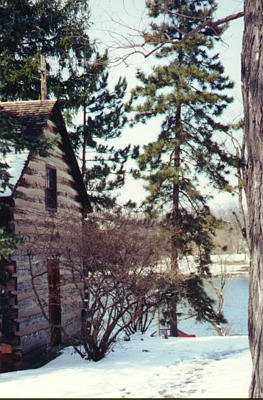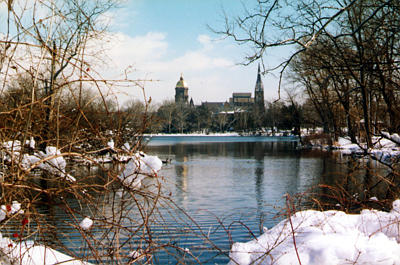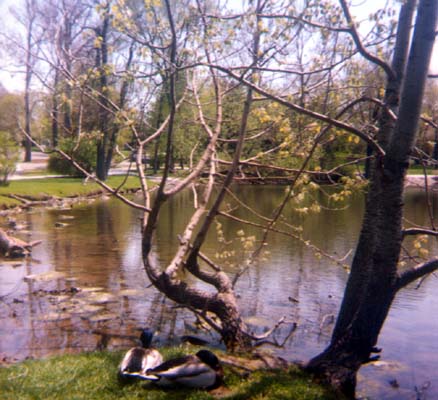
Notre Dame's Grotto / by Dorothy V. Corson

Sorin's Mission in the New World
Father Sorin and the little colony of six Brothers were stationed in southern Indiana when they arrived in the New World. A little over a year later Sorin received his new assignment. It was a prospect that would have daunted any ordinary man.

With empty hands and empty pockets Sorin had agreed to establish in this wilderness a Catholic University. But with what? With an unshakeable faith that she under whose patronage he had begun this work would somehow and in her own time accomplish it.(7)
In the years to come "there would always be one asset Notre Dame could always count on, the courage of Father Sorin."(8)
On November 26, 1842, the twenty-eight-year-old Father Sorin and four Brothers -- three more followed at a slower pace with oxen and the laden cart -- arrived at the shore of the lake of St. Mary to claim for a school the 524 acres given to them by Bishop Celestine de la Hailandiere.
When they arrived they viewed what appeared, in the heavy winter snows, to be one lake with an Island in the middle. Undoubtedly, the "happy coincidence" of learning the mission site had already been named Ste.-Marie-des-Lacs, and the lake, St. Mary's -- by his predecessor, Rev. Stephen Theodore Badin -- was not lost on Father Sorin as another intimation of her will.
He mentions the Indians in the area, "there remained only about two hundred Indians, all the others having been removed beyond the Mississippi," and describes Father Badin's impression of what was to become the site of the University:
One day after ministering to the wants of his dear Indians while gazing over the pretty lake on the shores of which he stood in admiration, a thought flashed to his mind that such a beautiful spot should be secured for God. What a delightful place for an orphan's asylum and a college! Instantly he resolved to buy it. "How well inspired ," said he later to Father Sorin, "I was when I entered these 524 acres."(9)

Father Sorin renamed the mission site: Notre Dame du Lac, Our Lady of the Lake, in honor of Mary, a name it retains to this day although it now contains two "mesmerizing" lakes:
Here two lakes, fed by never-failing springs, discharge their crystal waters into the river by a westerly flowing rivulet. These lakes were originally surveyed and mapped as one, but the land between them, now dry, was never covered by any depth of water, and in after years its marshy exhalations causing ill health, it was deemed advisable to introduce a system of drainage which converted the original single lake into two, of which the larger covers about 25 acres, the smaller 17. A rising ground between the lakes is still known as the 'Island.' . . . Here reside the members of the order whose duties do not require their constant presence at the university.(10)
These two lakes, [dedicated to St. Mary and St. Joseph], each with its peculiar interest, form the finest feature in landscape of Notre Dame. They are supplied entirely from springs, and their transparent waters wash shores of clean white sand and pebbles, and hide in the recesses multitudes of the finny tribe of every variety, from sturgeon to minnow. They afford rare sport to the pleasure of loving students both winter and summer: bathing, skating, fishing. These lakes cover an area of about forty-five acres, and the groves on their banks are the resort of every species of game known in the country.(11)
